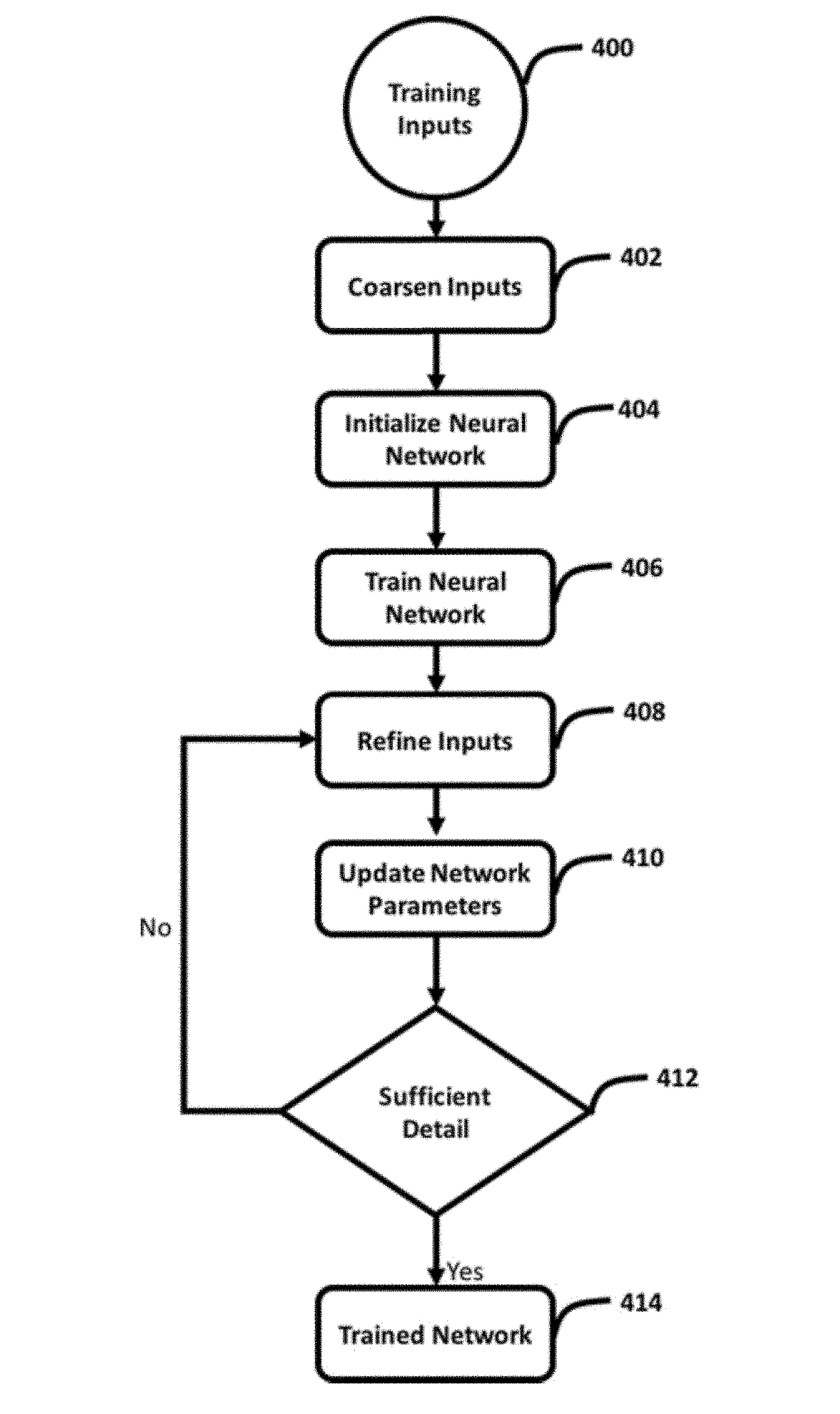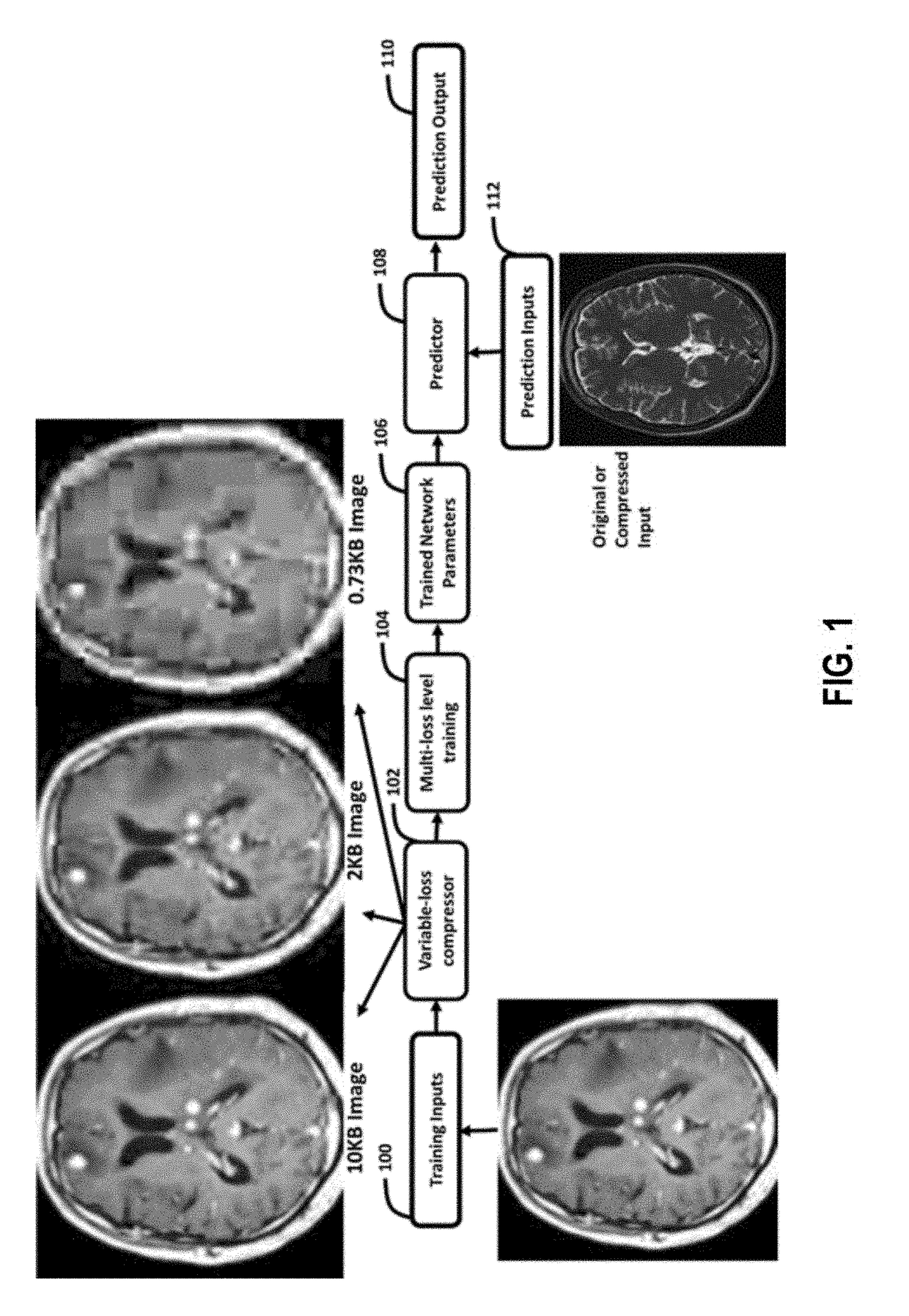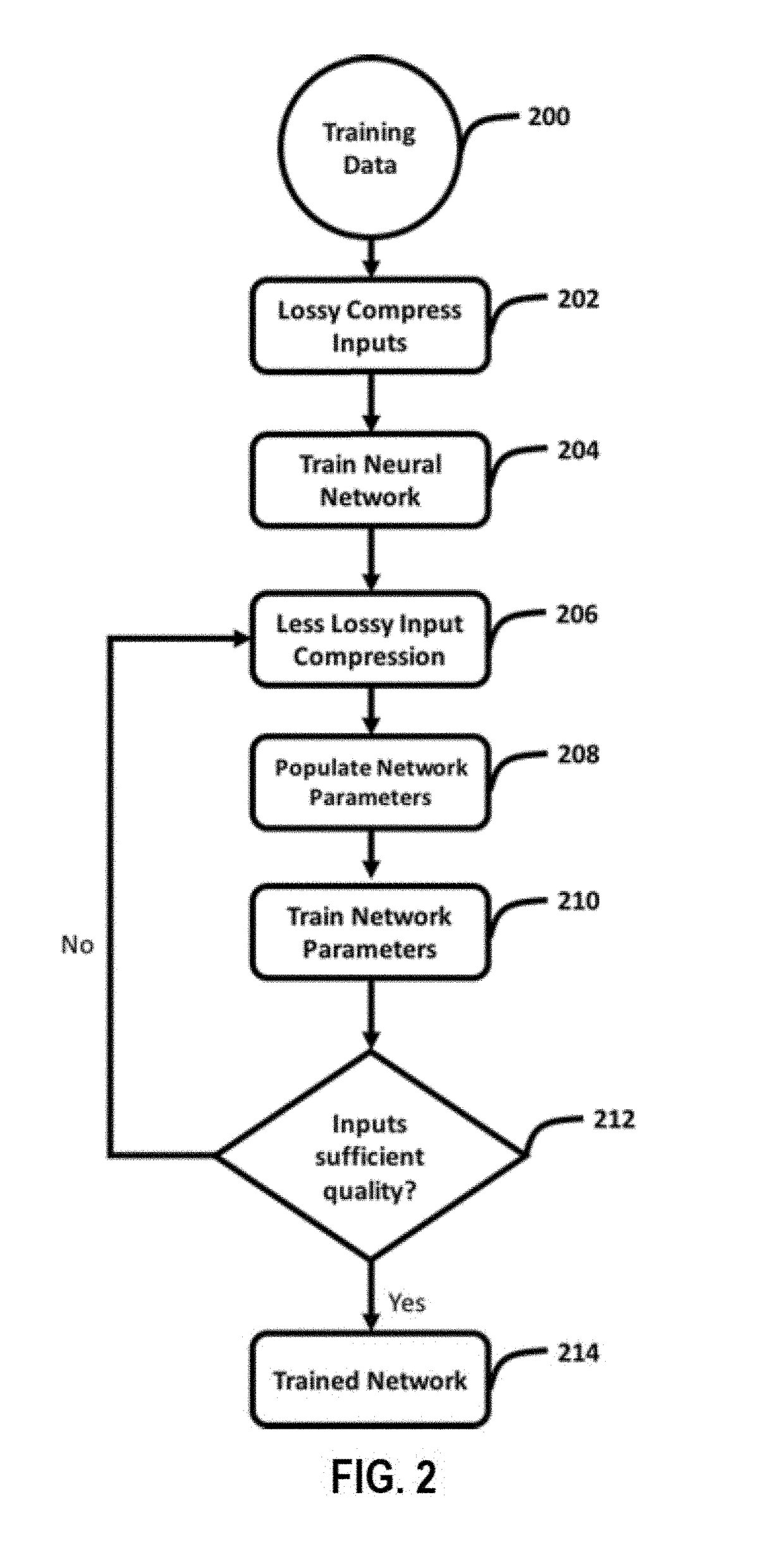Machine learning systems and methods for data augmentation
a machine learning and data augmentation technology, applied in the field of machine learning, can solve the problems of not being able to reliably verify the accuracy of the results, data does not exist or is difficult and/or expensive to obtain, and the network trained using only a small sample of a large data population may not produce accurate predictions using new inputs. , to achieve the effect of quick verification of results and easy automatability
- Summary
- Abstract
- Description
- Claims
- Application Information
AI Technical Summary
Benefits of technology
Problems solved by technology
Method used
Image
Examples
Embodiment Construction
[0023]Various inventive systems and methods (generally “features”) that improve the operation of computer-implemented neural networks will now be described with reference to the specific embodiments shown in the drawings. More specifically, features for training neural networks using compressed inputs will initially be described with reference to FIGS. 1-7. These compressed-input training techniques can improve the performance of neural networks on compressed images, and can yield trained neural networks that operate more effectively on compressed images than similar neural networks trained using full-resolution image data. Another benefit of these features is that they reduce the computational resources used to train a neural network to a desired level of accuracy compared to techniques that use full-resolution image data during training. Features for augmenting training data sets will then be described with reference to FIGS. 8-10. Beneficially, these features can reduce the amoun...
PUM
 Login to View More
Login to View More Abstract
Description
Claims
Application Information
 Login to View More
Login to View More - R&D
- Intellectual Property
- Life Sciences
- Materials
- Tech Scout
- Unparalleled Data Quality
- Higher Quality Content
- 60% Fewer Hallucinations
Browse by: Latest US Patents, China's latest patents, Technical Efficacy Thesaurus, Application Domain, Technology Topic, Popular Technical Reports.
© 2025 PatSnap. All rights reserved.Legal|Privacy policy|Modern Slavery Act Transparency Statement|Sitemap|About US| Contact US: help@patsnap.com



